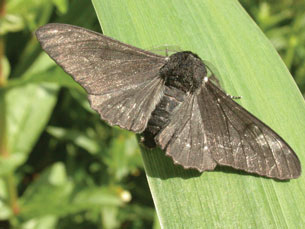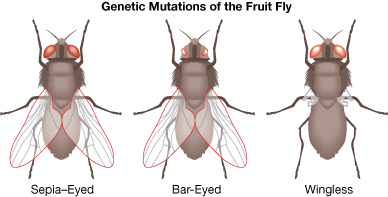Module 4 Intro
1. Module 4 Intro
1.5. Page 3
Module 4—Mechanisms of Population Change
 Try This
Try This
TR 1. Peppered Moth Simulation

© Steve McWilliam/shutterstock
Use the peppered moth simulation to see how a variation that at one time gave a selective advantage became a disadvantage when the environment changed.
The peppered moth (Biston betularia) has two colour variations in its population—light and dark. Before 1848, the dark variation was very rare. In the middle of the eighteenth century, the Industrial Revolution started to change the peppered moths’ environment. The soot released from industries covered trees and darkened the forest environment. After the Industrial Revolution, 90% of the peppered moths were of the dark colour variation. What caused this change in colour variations?
Directions
Step 1: Open the Gizmo: Natural Selection.
Step 2: Read and follow the steps in the “Exploration Guide.” Try to answer the questions as you go through the guide.
Step 3: After you have run this simulation for a light and dark forest, try the Assessment Questions listed below the simulation.
Step 4: Answer questions 1 through 3 for the Peppered Moth Simulation in your Lesson 1 Assignment. Also save your responses in your course folder.
 Read
Read
mutagen: something that causes an increased rate of mutation
Mutations are changes in the genetic material (DNA) of an organism. Mutations are naturally occurring at a steady rate in populations. This rate can be increased if mutagens are introduced into the environment.
Common mutagens include the following:
- X-rays
- nuclear rays
- UV rays
- some chemical compounds
selective advantage: an organism’s variations increase its chances of surviving
selective disadvantage: an organism’s variations reduce its chances of surviving
What happens when a mutation is passed on to offspring?
- Some mutations are harmless and have no effect.
- Some mutations may create a new variation that provides a selective advantage and increases the offspring’s chances of survival.
- Some mutations may create a new variation that provides a selective disadvantage and reduces the offspring’s chances of survival.
Next is an example of a mutation creating a variation in a population of fruit flies.
Parent fruit flies were bombarded with X-rays. The parents then mated with healthy fruit flies, and the offspring had many mutations. The following image shows examples of some of these mutations.

The wingless mutation will cause a disadvantage to the fly, and the offspring likely will not survive to reproduce. Since the offspring doesn’t reproduce, it will not pass on the disadvantageous mutation.
 Watch and Listen
Watch and Listen
Sickle Cell Anemia: An Advantage or a Disadvantage?
Sickle-cell disease is caused by a chance mutation in the hemoglobin molecule found in red blood cells. The mutated gene is passed on from generation to generation. This disorder causes red blood cells to become crescent-shaped instead of round and smooth. (See “Figure 4.4” on page 117 of the textbook.) This change in shape causes blood clots and many other medical problems.
There is an advantage to the sickle-cell gene. Do an Internet search to find the advantage of having one of the sickle-cell genes. Try using the keywords “pbs evolution library sickle cell” to see if you can find a video about sickle cells.
Discuss, either orally or in writing, the following questions:
If you knew you had the sickle-cell gene, would you choose to have children? Would the negatives prevent you from having children? Or would the positives outweigh the negatives? Prepare your thoughts, and post them in the discussion area. How do your thoughts compare with those of your classmates? Once you have read other postings, consider your answers. You may modify your response before submitting your final discussion as part of the Lesson 1 Assignment.
Click to view the marking rubric for this activity.